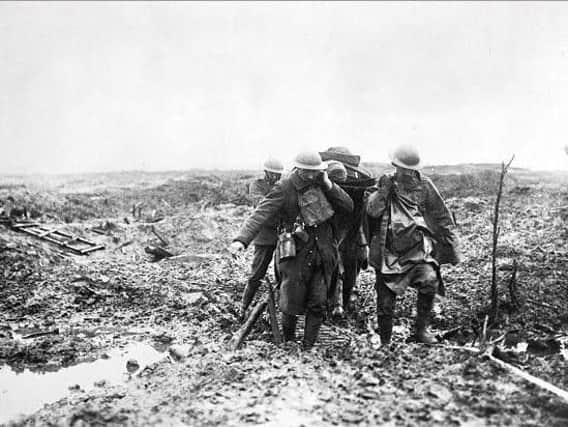How Yorkshire's middle classes tried to fund World War One effort - and why the failure was covered up


New research has revealed the patriotic Yorkshire manufacturers, sculptors and even schoolmasters who attempted to help the British Government finance the nation’s involvement in the First World War – and exposed for the first time how the establishment covered up the wider failure of the fund-raising scheme.
Financing the war required the UK government to borrow the equivalent of a full year’s GDP. But its first effort to raise capital in the bond market was a spectacular failure. The 1914 War Loan scheme raised less than a third of its £350m target and attracted only a very narrow set of investors.
Advertisement
Hide AdAdvertisement
Hide AdResearchers at Queen Mary University of London have analysed the Bank of England’s ledgers and found that the initial efforts to pay for the war through loans from the public fell flat. The War Loan scheme failed to such an extent that the Bank of England had to secretly fund half the shortfall. The government raised just £91 million from the public, less than a third of the £350 million target.
Researcher Norma Cohen says: “The fund-raising effort was such a failure that the establishment felt compelled to cover it up. The truth would have led to a collapse in the price of outstanding war loans which would have endangered future capital raising. Had it come to light, it would have been a propaganda coup for the Germans – the great patriotic project to pay for the war was mostly a myth.”
But thousands of people did invest in the scheme, many of whom were from Yorkshire. Researchers found Theodore Martin of Lindley, a cloth manufacturer from Huddersfield, contributed £5,000, while Fred Andrews, from Great Horton, Bradford, who is believed to have been another manufacturer, invested £1,000.
Schoolmaster Philip Haswell, who lived at Giggleswick School in Settle, put in £100. More than 100 investors came from Yorkshire, mostly Leeds, Sheffield, and Huddersfield.
Advertisement
Hide AdAdvertisement
Hide AdBut when it became clear to the Government and the Bank of England that the amount of money being pledged was nowhere near enough, they moved quickly and secretly to plug the gap.
The Bank’s chief cashier, Sir Gordon Nairn, and his deputy, Ernest Harvey, purchased the outstanding loans in their own names with the bonds then held by the Bank on its balance sheet.
To hide the fact that the Bank was forced to step in, the bonds were classified as holdings of ‘Other Securities’ in the Bank’s balance sheet, rather than as holdings of government securities. Sir Gordon even formally swore a statement that all £350 million had been sold to the public.
The failure of the scheme was in stark contrast to the public’s perception of the War Loan effort. The government led a propaganda effort to persuade the public that the scheme had been an overwhelming success. The Financial Times reported on November 23, 1914 that the scheme was “over-subscribed by £250 million and still the applications are pouring in”.
Advertisement
Hide AdAdvertisement
Hide AdEvidence from the sample of early investors in the War Loan shows that ‘sacrifice’ and patriotism alone were not sufficient to attract the required funds. Subsequent war financings would offer investors even higher premiums and previously unthinkable tax breaks in exchange for capital. This includes the mammoth War Loan of 1917 which raised £2.1 billion with a hefty return of 5.4 per cent.
But even this wasn’t enough and after the war, the loans became a major source of controversy. As debt service rose to nearly 40 per cent of tax receipts in the 1920s, investors were cast as profiteers, collecting rents on War Loans while others toiled.
For the Bank of England, the failure marked an important step in its transformation from private institution to a central bank as it came to terms with the Herculean task of managing the national debt.